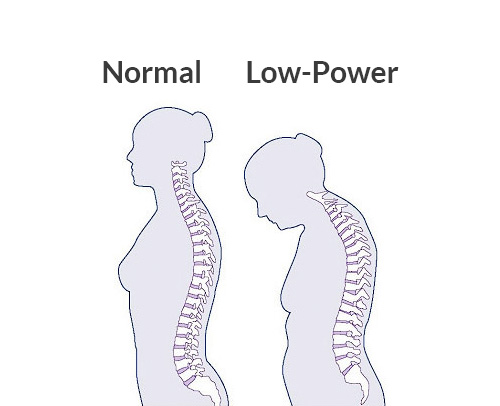
This post was originally published on the ooomf blog.
Palms sweaty. Heart racing. You know the feeling. Whether it’s five people or 50, public speaking is a gut-wrenching experience for most of us.
Before co-founding ooomf, I had a huge fear of speaking in public. Any time I had to present something in front of more than a handful of people, my stomach would turn to knots and my throat would get so tight I wouldn’t be able to speak.
The reality is, if you’re planning on presenting pretty much anything in your life (which you most likely will), you’ll need to be able to effectively communicate your ideas in front of at least a few people.
To get over my fear of public speaking, I realized a good place to start would be to understand why I was getting stage fright in the first place.
I thought it would be interesting to share with you my research for how I learned to overcome my fear of public speaking in the last year while founding a company.
What is stage fright, really?
Sometimes, even weeks before a presentation, I would think, ”What happens if people think I suck or someone thinks I don’t know what I’m talking about?”
As humans, we’re hardwired to worry about our reputation above almost all things. There are primitive parts of your brain that control your reaction to threats on your reputation, making these reactions extremely difficult to control.
These reactions to threats are precisely what Charles Darwin tested when he visited a snake exhibit at a zoo in London. Darwin tried to remain perfectly calm while putting his face as close to the glass as possible in front of a puff ader snake that was ready to strike.
However, every time the snake would lunge toward him, he would grimace and jump backward. Darwin wrote his findings in his diary,
My will and reason were powerless against the imagination of a danger which had never been experienced.
He concluded that his response to fear was an ancient reaction that has not been effected by nuances in modern civilization. This response is know as the “fight or flight” syndrome, a natural process that is designed to protect your body from harm.
What happens in our brain
When you think about negative consequences, a part of your brain, the hypothalamus, activates and triggers the pituitary gland to secrete the hormone ACTH.
This hormone stimulates the Adrenal Glands in your kidneys and results in the release of adrenaline into your blood:
It is at this point in the process when many of us experience the reactions of this process.
Your neck and back muscles contract (forcing your head down and your spine to curve) moving your posture into a slouch. This results in a Low-Power position as your body tries to force itself into the fetal position:
If you try to resist this position by pulling your shoulders back and lifting your head up, your legs and hands shake as the muscles in your body instinctively prepare for an impending attack.
Your blood pressure increases and your digestive system shuts down to maximize efficient delivery of even more nutrients and oxygen to your vital organs. When your digestive system shuts down, this is what leads to the feeling of dry mouth or butterflies.
Even your pupils dilate, which makes it hard to read anything up close (like presenter notes) but improves long range visibility, making you more aware of your audience’s facial expressions.
Your experience of stage fright is also affected by 3 main things:
1. Genes
Genetics play a huge role in how strong your feelings of anxiety are in social situations. For instance, even though John Lennon performed on stage thousands of times, he was known for throwing up before going on stage for his live performances.
Some people are simply genetically wired to feel more scared when performing or speaking in public.
2. Level of task mastery
We’ve all heard the saying, “practice makes perfect.” The main benefit of practice is to increase your familiarity of a given task. As this familiarity increases, feelings of anxiety decrease, and have less of a negative impact on performance.
In other words, the anxiety you feel about speaking in public will be less, the more comfortable you feel with your presentation.
To support these findings, in 1982, a team of psychologists watched pool players play alone or in front of crowd. The study found that:
Stronger pool players sank more shots when performing in front of a crowd, while poor pool players performed worse. Interestingly, the stronger pool players performed even better when people were watching them versus when they were playing alone.
What this means is if you know your presentation inside out, it’s more likely that you’ll give an even better presentation in front of a large audience than when you rehearsed alone or in front of a friend.
3. Stakes
If you’re giving a presentation where your business is on the line or the whole nation is watching you speak, there’s an increased chance that your reputation could be massively damaged if you screw up.
As the stakes increase, there’s a chance your reputation could be completely ruined if you perform poorly, which triggers the release of more adrenaline, and can result in paralyzing fear and anxiety.
We’ve seen the effect of stakes on reputation in online communities as well. For example, many eBay sellers worry about their reputation a ton because it directly effects how much money they make. One piece of negative feedback can ruin an eBay seller’s profile and cause them to lose sales.
In fact, one study found that a good reputation for a seller on eBay added 7.6 percent to the sale price of their items.
Having a good reputation is important to protect but, this also leads to having a fear that one slip-up could ruin your reputation and cause the loss of future opportunities.
How I learned to cure stage fright – a 4-step guide
So now that we know the root causes of why public speaking is scary, here’s what you can do to dramatically improve and overcome your on-stage jitters.
1. Preparation
I’ve been to many conferences where I see speakers organizing slides a few minutes before their talk. That’s not the optimal way to prepare for a quality performance. Would you see a musician learning their song 10 minutes before going on stage to perform it? No way.
This way of preparation is also not fair to your audience who is giving the next 10, 20, or 60 minutes of their attention to you.
When I’m preparing to give a presentation or a talk at a conference, here’s my process:
About a week before, I draw out a storyboard of about 15-20 slides, thinking over the content using stick figures or a few words that I may put on my slides. Here’s one of my storyboards:
Creating this storyboard helps me feel comfortable that I know the major points I want to cover and still leaves me plenty of time to rehearse and perfect slides.
I then layout my talk like this:
- introduction
- main topic 1
- point
- example (something unique from my experience)
- point (with key actionable take away)
- main topic 2
- point
- example (something unique from my experience)
- point (with key actionable take away)
- main topic 3
- point
- example (something unique from my experience)
- point (with key actionable take away)
- conclusion
Formatting your talk in this “point, example, point” format not only helps you visualize your entire presentation but also allows you to think deeply about the subject matter you’re covering so you don’t leave your audience wanting more.
I start by filling in each main topic point first and then skip back to the introduction and finish with the conclusion.
When working on the introduction, I start with a story that covers who I am and why the audience should care about my talk. Tell your audience right away how you are going to help them so they tune in.
I then rehearse each of these individual parts (introduction, main topic 1, main topic 2, etc.) between 5-10 times each.
Once that’s done, I recite the presentation content from start to finish at least 10 times.
This might seem like a lot of preparation but keep in mind, Steve Jobs was known to rehearse for hundreds of hours and prepare weeks in advance for his epic Apple keynote presentations.
2. How to practice like it’s the real thing
It’s important while preparing your presentation to setup your environment in the same way you plan on giving your actual presentation. This removes unknown variables and requires you to spend less mental energy thinking about details when you’re on stage for the actual presentation.
In 2009, a group of MIT researchers found that when there are many visual stimulants in front of you, only one or two things tend to get activated in the brain, indicating that we’re really only able to focus on one or two items.
You want to get to a point where all you have to focus on is connecting with the audience and enhancing the delivery of your story, rather than worrying about what slide is coming up next or where you need to stand on stage.
When I’m rehearsing, I set up my computer on the same side it will be during the actual presentation, I use the same clicker, and deliver my presentation every time as if it were the real thing.
Another tip to help prepare for unknown variables is to say your presentation in front of someone or at least record yourself to replicate the effect of someone watching you. This will help you feel less anxious when you get up in public, knowing that you’ve already said your presentation in front of at least one person.
3. Breath, stretch, and let it go
The most nerve-racking part of public speaking for me is always those last few minutes before heading on stage. What I do to combat those feelings is I head into the bathroom, stretch my arms up, and take three deep breaths in and out. Here’show this stretch looks:
This exercise activates the hypothalamus, and sends out hormones to trigger a relaxation response.
In fact, researchers tested a single session of slow breathing on 46 trained musicians and the results of the study found that one session of slow breathing helped control arousal, especially for musicians that had high levels of anxiety.
The feelings associated with stage fright are usually the strongest during the lead-up to the presentation rather than during it, so take a minute to breath and stretch before heading out on stage.
4. After you present, book another speaking engagement right away
If you want to get better at public speaking, you have to do it more. Each time you speak, you will get less nervous and more comfortable.
At first, try to book speaking engagements that have lower stakes. For example, maybe it’s a presentation to your family members about the importance of taking a vacation. Anything to help you rehearse the behavior of getting up and speaking in front of people.
Quick last tip: How to stop saying “ums” and “ahs”
A few “ums” or “ahs” won’t kill your presentation but if they begin to fill every slide transition or each time you pause between points, they can become a distraction.
Training yourself to stop saying “um” or “ah” can be difficult, especially if it’s a part of your everyday speech.
One of the best ways to knock these filler words out of your vocabulary is to use a technique called chunking. Chunking means splitting your presentation up into short burst of words followed by a short break and then continuing on with another short burst of words.
For example, group one to two related sentences together followed by a one to two second pause, then another one or two sentences, and so on. This will help you develop a speaking rhythm, making it easier to avoid filler words.
Public speaking can be scary but it’s a necessary part of almost every career. Hopefully, knowing why stage fright happens and using these tips on how to overcome it will help you own your next presentation.
What other tips do you have for becoming a better public speaker? Would love to hear your thoughts in the comments!
Image credit: hxdbzxy/Shutterstock
Get the TNW newsletter
Get the most important tech news in your inbox each week.








